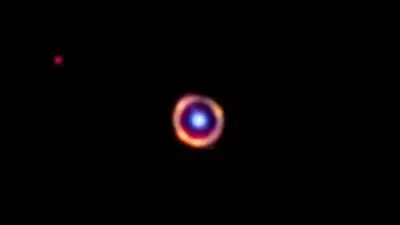
Universe's most distant 'smoke' molecules detected by Webb telescope
text_fieldsNew York: Using the newest James Webb Space Telescope, an international team of scientists has found complex organic compounds in the most distant galaxy to date.
The molecules, which were discovered in the galaxy SPT0418-47, more than 12 billion light-years away, are common on Earth in smog, smoke, and soot.
According to a study published in the journal Nature, the galaxy was formed when the universe was less than 1.5 billion years old, or roughly 10% of its present age.
SPT0418-47 was first discovered using the National Science Foundation's South Pole Telescope in 2013 and was previously identified as a dust-obscured galaxy magnified by a factor of about 30 to 35 by gravitational lensing.
The telltale signature of large organic molecules akin to smog and smoke are building blocks of the same cancer-causing hydrocarbon emissions on Earth that are key contributors to atmospheric pollution.
However, the implications of galactic smoke signals are much less disastrous for their cosmic ecosystems, according to Texas A&M University astronomer Justin Spilker.
"These big molecules are actually pretty common in space," explained Spilker, an assistant professor at the varsity's Department of Physics and Astronomy.
"Astronomers used to think they were a good sign that new stars were forming. Anywhere you saw these molecules, baby stars were also right there blazing away," he added.
The new results from Webb show that this idea might not exactly ring true in the early universe, Spilker said.
"Thanks to the high-definition images from Webb, we found a lot of regions with smoke but no star formation, and others with new stars forming but no smoke," Spilker said.
The University of Illinois Urbana-Champaign graduate student Kedar Phadke, who led the technical development of the team's Webb observations, noted that astronomers are using Webb to make connections across the vastness of space with unprecedented potential.
"Discoveries like this are precisely what Webb was built to do: understand the earliest stages of the universe in new and exciting ways," Phadke said.
"It's amazing that we can identify molecules billions of light-years away that we're familiar with here on Earth, even if they show up in ways we don't like, like smog and smoke. It's also a powerful statement about the amazing capabilities of Webb that we've never had before."
Webb is an international programme led by NASA with its partners European Space Agency, and Canadian Space Agency.
With inputs from IANS























